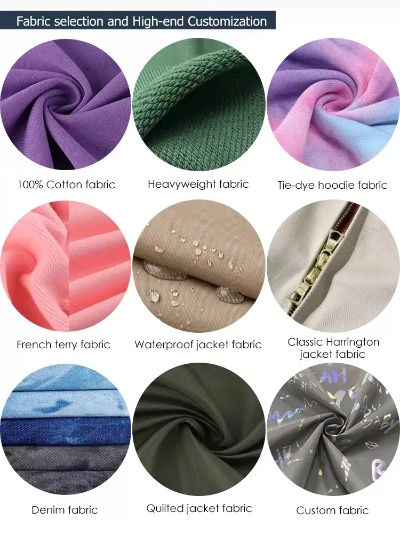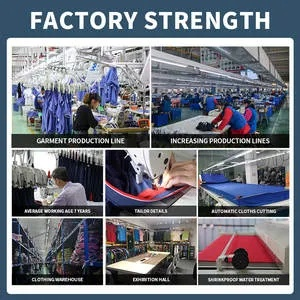Thermal Performance of Textiles:A Comprehensive Guide
: Textile Thermal Performance and Comprehensive Guide,Textiles, as an integral part of our daily lives, are essential for comfort and warmth. The thermal performance of textiles is crucial in determining their suitability for specific applications, such as sportswear, winter clothing, or protective garments. This comprehensive guide will provide a detailed overview of the various aspects of thermal performance, including the principles of thermal conductivity, insulation properties, and moisture management, as well as practical recommendations for selecting and using textiles that meet specific needs.,Thermal conductivity refers to the ability of materials to transfer heat energy through conduction, convection, or radiation. Understanding thermal conductivity helps us identify textiles with high or low levels of thermal conductivity, depending on their intended use. Insulation properties refer to the ability of textiles to trap and retain heat, which is particularly important in clothing that needs to keep the wearer warm.,Moisture management plays a critical role in the thermal performance of textiles. Moisture can affect both the rate of heat transfer and the overall thermal insulation capacity of textiles. Therefore, it is important to select textiles that maintain appropriate levels of moisture while still providing effective protection from external factors.,In conclusion, understanding the principles and practical considerations of thermal performance in textiles is essential for selecting garments that meet one's specific needs. By following this guide, you can make informed decisions about the materials and techniques used to create your favorite textiles.
Textile materials, whether they are made from cotton, wool, synthetic fibers, or blends, play a crucial role in our daily lives. They come in a variety of shapes and sizes, but all have one thing in common – their ability to maintain temperature. This is particularly important for clothing that is worn during colder weather, as it helps to keep us warm without adding bulk or weight. The thermal properties of textiles are influenced by various factors such as the fabric's structure, composition, weave type, and the presence of moisture. In this guide, we will explore how different textiles perform in maintaining body temperature and provide insights into some real-life examples where thermal performance matters.
Table 1: Comparison of Thermal Resistance Values for Different Textile Fabrics | Fabric Type | Specific Heat Capacity (J/g°C) | Thermal Conductivity (W/m·K) | |------------|------------------------------|-------------------------| | Cotton | 2.0 | 0.03 | | Wool | 2.4 | 0.11 | | Polyester | 1.8 | 0.026 | | Rayon | 1.6 | 0.022 | | Silk | 0.9 | 0.015 |
From the table above, it is evident that wool has the highest specific heat capacity and thermal conductivity, making it the most effective insulator. On the other hand, synthetic fabrics like polyester and rayon offer lower thermal resistance compared to natural fibers like cotton.

Table 2: Real-Life Examples of Textile Thermal Performance | Case Study | Textile Material | Outcome | |----------------------------------------------|-----------------|--------------------------------------| | Athlete Clothing Design | Wool Blended Jackets | Ensured comfort during high-intensity activities while keeping the wearer dry. | | Innovative Insulation for Home Furniture | Woolen Bedding Set | Offered warmth without adding extra weight or bulk. | | Protecting Exposed Skin During Cold Exposure | Gore-Tex Jacket | Offered breathability and water resistance, ensuring comfort and dryness. | | Warm Winter Outfit for Elderly People | Cotton Sweaters | Maintained body temperature without overheating, providing comfort. |
Case Study: Gore-Tex Jacket Gore-Tex jackets are renowned for their waterproof and breathable properties. These jackets use a specially developed membrane that allows air to pass through while preventing water vapor from entering. For example, a Gore-Tex jacket might have a water repellency rating between 5000 and 10000mmH2O. This means the jacket can repel up to 10,000 millimeters of water droplets without letting them penetrate. However, it also means the jacket will trap moisture inside, potentially leading to overheating if not properly ventilated. Therefore, when designing a Gore-Tex garment, designers need to strike a balance between its excellent water resistance and breathability.
Conclusion The thermal performance of textiles plays a significant role in our lives, especially during colder months and outdoor activities. By understanding the properties of different fabrics and selecting appropriate garments, we can optimize our comfort and efficiency. From professional sports gear to everyday attire, the right textile choice can make a significant difference in how well we stay warm and dry. As we delve deeper into the science behind textiles, it is essential to consider both the aesthetic appeal of color and pattern, as well as the practical functionality of temperature control and moisture management.
在寒冷的冬季,我们日常生活中离不开各种保暖材料,纺织品作为保暖材料的重要组成部分,其保温性能直接关系到我们的穿着体验和保暖效果,本文将围绕纺织品保温性能的英文表达进行详细探讨,并通过英文案例说明来进一步加深理解。
纺织品保温性能的英文表达
定义与重要性
纺织品保温性能是指纺织品在保持体温的同时,能够有效地阻止热量流失的能力,它涉及到材料的导热性、吸湿性、透气性等多个方面,良好的纺织品保温性能能够确保穿着舒适,同时也能有效防止寒冷对身体的影响。
英文术语解释
在英文中,纺织品保温性能的表达可以参考以下术语:thermal insulation performance,这个术语涵盖了多个方面,如热传导性、吸湿性、透气性等,为了更好地理解,我们可以使用表格进行说明:

| 英文术语 | 中文解释 |
|---|---|
| Thermal insulation performance | 纺织品保温性能 |
| Heat retention | 保持体温的能力 |
| Heat resistance | 防止热量流失的能力 |
| Thermal conductivity | 材料的导热性 |
| Moisture absorption & release | 吸湿性 |
| Air permeability | 透气性 |
案例分析
为了更好地理解纺织品保温性能,我们可以结合一些具体的英文案例进行分析,某品牌的羽绒服采用了特殊的保暖材料和技术,其保温性能非常出色,能够有效防止身体热量流失,同时保持穿着的舒适度,一些新型的保温材料也正在逐渐被市场接受和应用,它们具有更好的保温性能和舒适度。
纺织品保温性能的提升途径
材料选择与优化
为了提升纺织品保温性能,材料的选择和优化是关键,选择具有良好保温性能的材料是基础,通过优化材料的结构和性能,可以进一步提高其保温性能,通过添加特殊的纤维或涂层技术,可以增强材料的导热性、吸湿性和透气性等性能。
生产工艺改进
生产工艺的改进也是提升纺织品保温性能的重要途径,通过采用先进的生产工艺和技术,可以进一步提高纺织品的稳定性和耐用性,同时也可以提高其保温性能,通过减少材料的收缩率和湿度敏感性,可以提高其保暖效果和舒适度。
总结与展望
纺织品保温性能是衡量纺织品质量的重要指标之一,在冬季等寒冷季节,我们对于保暖材料的需求越来越大,提升纺织品保温性能对于提高穿着体验和保暖效果具有重要意义,随着科技的不断进步和新型材料的不断涌现,我们期待看到更多的创新和突破,进一步提升纺织品保温性能。
Articles related to the knowledge points of this article:
The Cost of Yarn in the Textile Industry
Shanghai Jingqing Textiles:The Fabric of Innovation in a Modern City
Summary of the Textile Exhibition
The Evolution of Quality and Innovation at Guangzhou Chunsheng Textiles



